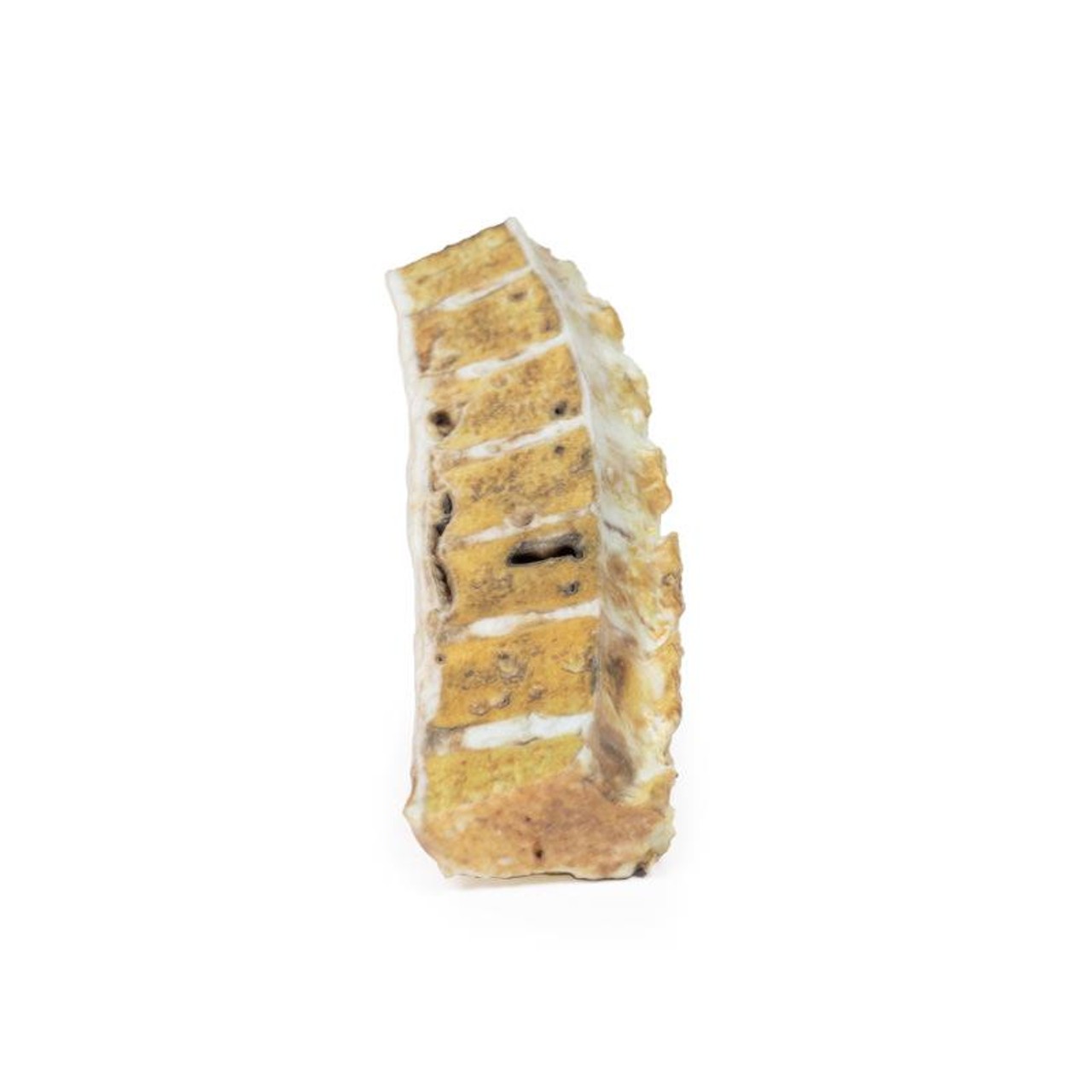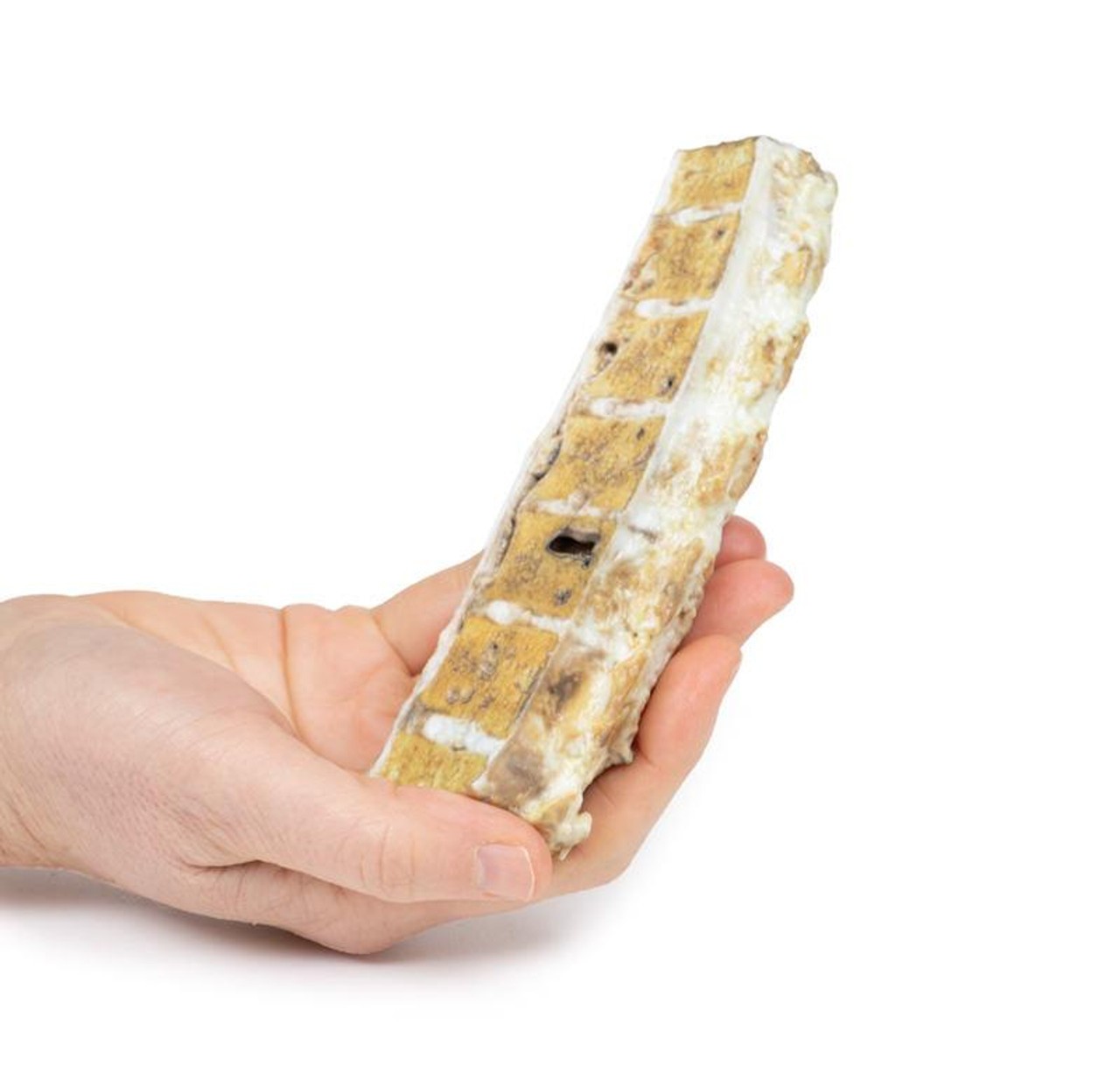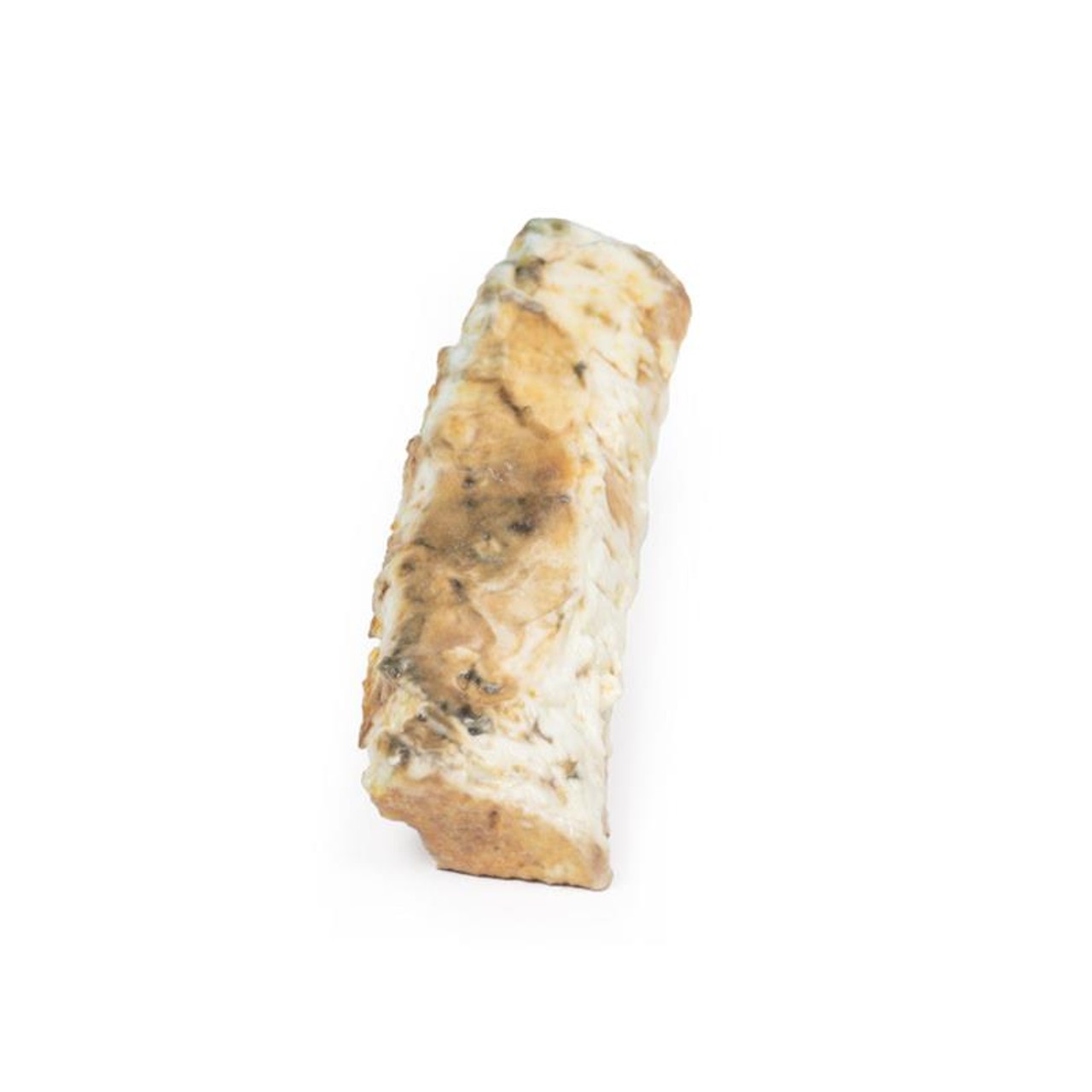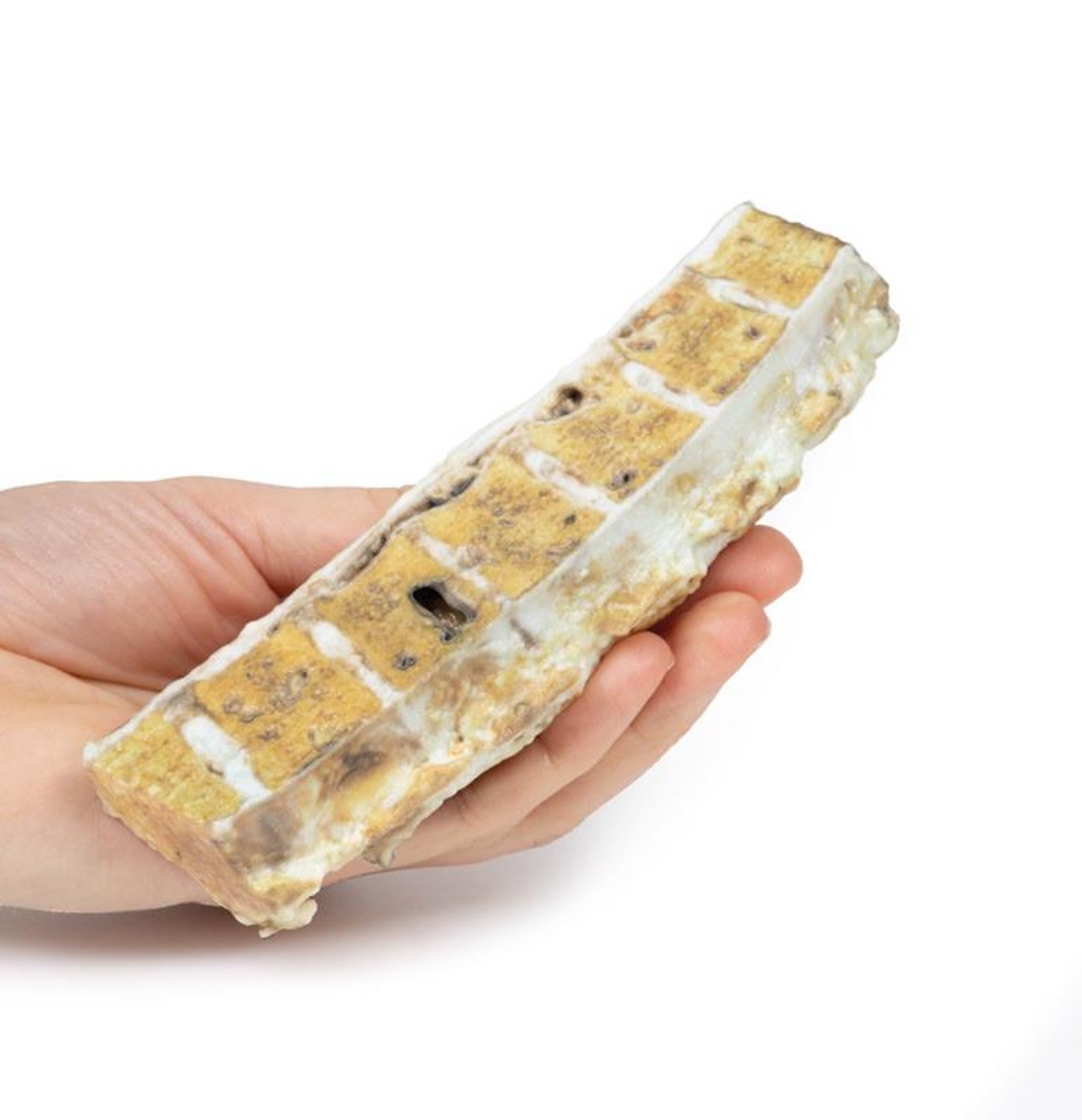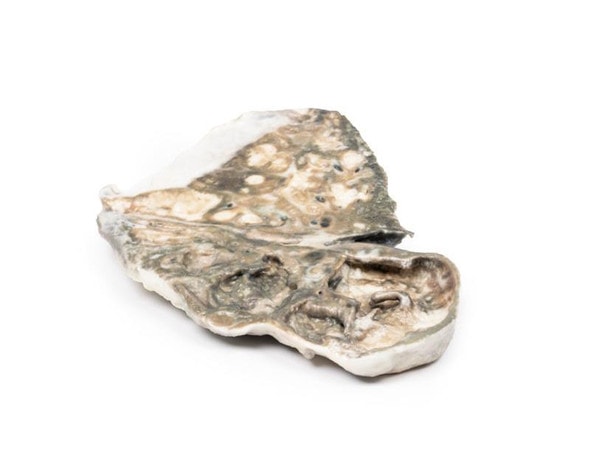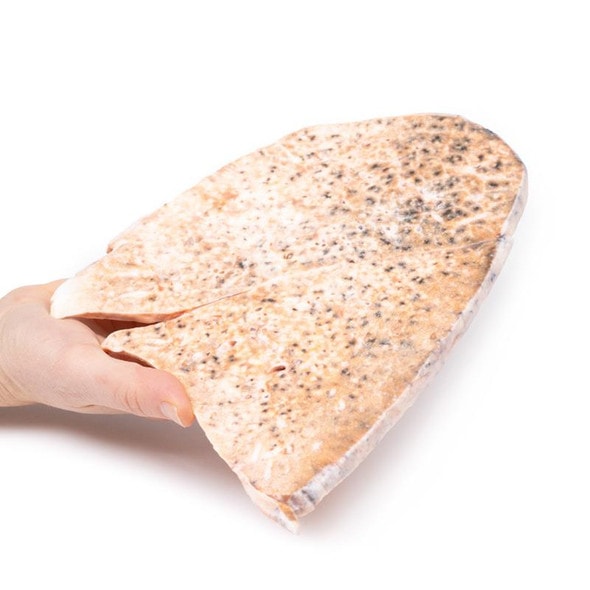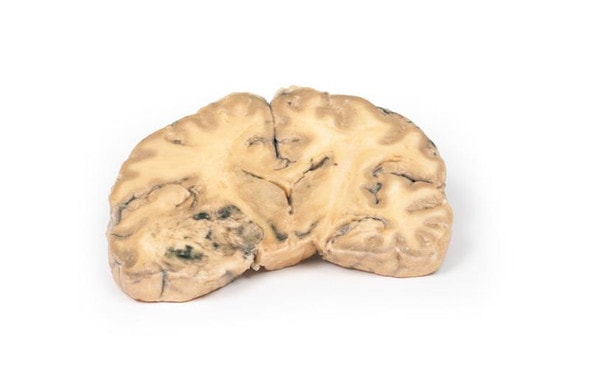Description
Developed from real patient case study specimens, the 3D printed anatomy model pathology series introduces an unmatched level of realism in human anatomy models. Each 3D printed anatomy model is a high-fidelity replica of a human cadaveric specimen, focusing on the key morbidity presentations that led to the deceasement of the patient. With advances in 3D printing materials and techniques, these stories can come to life in an ethical, consistently reproduceable, and easy to handle format. Ideal for the most advanced anatomical and pathological study, and backed by authentic case study details, students, instructors, and experts alike will discover a new level of anatomical study with the 3D printed anatomy model pathology series.
Clinical History
A 37-year old female presents with increasing thoracic back pain. She has a history of untreated human immunodeficiency virus (HIV) infection and pulmonary tuberculosis. History revealed ongoing low-grade fevers, chills and weight loss. Examination revealed a cachexic patient with tender thoracic vertebrae at multiple levels. Blood test showed an elevated serum calcium and erythrocyte sedimentation rate. X-ray of her spine showed lytic areas in the thoracic vertebrae. During her hospital admission, she developed urosepsis and died.
Pathology
The specimen is a portion of the patient's thoracic vertebral column that has been sawn longitudinally and mounted to display the cut surface of 7 thoracic vertebrae. In all vertebrae, there are osteolytic areas, varying from 1 to 12 mm in diameter, which contain caseous degenerative material* (mostly now lost) and are surrounded by a thin zone of dense bone. The tuberculous inflammatory process has extended into one of the intervertebral discs, and has also spread outside the vertebral bodies to form collections of caseous material beneath the anterior longitudinal ligament. This is an example of tuberculous mycobacterial osteomyelitis of the vertebral column with paravertebral extension, also known as Pott's Disease.
Further Information
Tuberculosis (TB) is a chronic pulmonary and systemic infectious disease caused by Mycobacteria tuberculosis. Transmission most commonly occurs via inhalation of aerosolized droplets of M. tuberculosis. Risk factors for contracting TB include being an inhabitant of a developing country where the disease may be endemic, immunosuppression (e.g. HIV, steroid use, anti-TNF use and diabetes), chronic lung disease (e.g. silicosis), alcoholism, and generalized malnutrition.
After initial pulmonary infection of M. tuberculosis clinical manifestation varies. In 90% of individuals with an intact immune system, they enter an asymptomatic latent infection phase. This latent TB may reactivate at any time in the patient's life. In the other 10% of patients, especially in the immunocompromised population, they develop primary disease, which is immediate active TB infection. Manifestations of primary TB include pulmonary infection symptoms (e.g. consolidation, effusion and hilar adenopathy) and extra pulmonary symptoms - lymphadenopathy, meningitis and disseminated miliary TB. Secondary tuberculosis occurs when there is reactivation of a previous latent TB infection. Around 10% of latent TB will reactivate usually during periods of weakened host immunity. Typical symptoms of reactivation are cough, hemoptysis, low grade fever, night sweats and weight loss.
Osseous infection occurs 1-3% of patients with TB infection. There is a higher incidence of developing bone disease in patients from developing countries and immunocompromised patients. The TB usually spreads hematogenously from the site of active disease. Pott's disease accounts for 40% of TB bone infections. The infection is destructive eroding vertebral discs and vertebrae leading to compression fractures, which may cause symptoms of cord or nerve root compression. Symptoms include pain at the site of disease, fevers, chills, weight loss, symptoms of compression and spinal deformities, such as kyphosis and scoliosis.
TB diagnosis is usually made with a clinical history and chest x-ray and multiple sputum cultures. Mantoux skin tuberculin test and serum interferon gamma release assay may also be used to help screen for infection. Biopsies may be taken of suspected infection site for culture to assist diagnosis.
Treatment involves prolonged courses of multiple antibiotics, which depend on the antibiotic resistance of the infecting mycobacterium species.
* Caseous degeneration or necrosis is a unique form of cell death in which the tissue maintains a cheese-like appearance.
Advantages of 3D Printed Anatomical Models
- 3D printed anatomical models are the most anatomically accurate examples of human anatomy because they are based on real human specimens.
- Avoid the ethical complications and complex handling, storage, and documentation requirements with 3D printed models when compared to human cadaveric specimens.
- 3D printed anatomy models are far less expensive than real human cadaveric specimens.
- Reproducibility and consistency allow for standardization of education and faster availability of models when you need them.
- Customization options are available for specific applications or educational needs. Enlargement, highlighting of specific anatomical structures, cutaway views, and more are just some of the customizations available.
Disadvantages of Human Cadavers
- Access to cadavers can be problematic and ethical complications are hard to avoid. Many countries cannot access cadavers for cultural and religious reasons.
- Human cadavers are costly to procure and require expensive storage facilities and dedicated staff to maintain them. Maintenance of the facility alone is costly.
- The cost to develop a cadaver lab or plastination technique is extremely high. Those funds could purchase hundreds of easy to handle, realistic 3D printed anatomical replicas.
- Wet specimens cannot be used in uncertified labs. Certification is expensive and time-consuming.
- Exposure to preservation fluids and chemicals is known to cause long-term health problems for lab workers and students. 3D printed anatomical replicas are safe to handle without any special equipment.
- Lack of reuse and reproducibility. If a dissection mistake is made, a new specimen has to be used and students have to start all over again.
Disadvantages of Plastinated Specimens
- Like real human cadaveric specimens, plastinated models are extremely expensive.
- Plastinated specimens still require real human samples and pose the same ethical issues as real human cadavers.
- The plastination process is extensive and takes months or longer to complete. 3D printed human anatomical models are available in a fraction of the time.
- Plastinated models, like human cadavers, are one of a kind and can only showcase one presentation of human anatomy.
Advanced 3D Printing Techniques for Superior Results
- Vibrant color offering with 10 million colors
- UV-curable inkjet printing
- High quality 3D printing that can create products that are delicate, extremely precise, and incredibly realistic
- To improve durability of fragile, thin, and delicate arteries, veins or vessels, a clear support material is printed in key areas. This makes the models robust so they can be handled by students easily.

